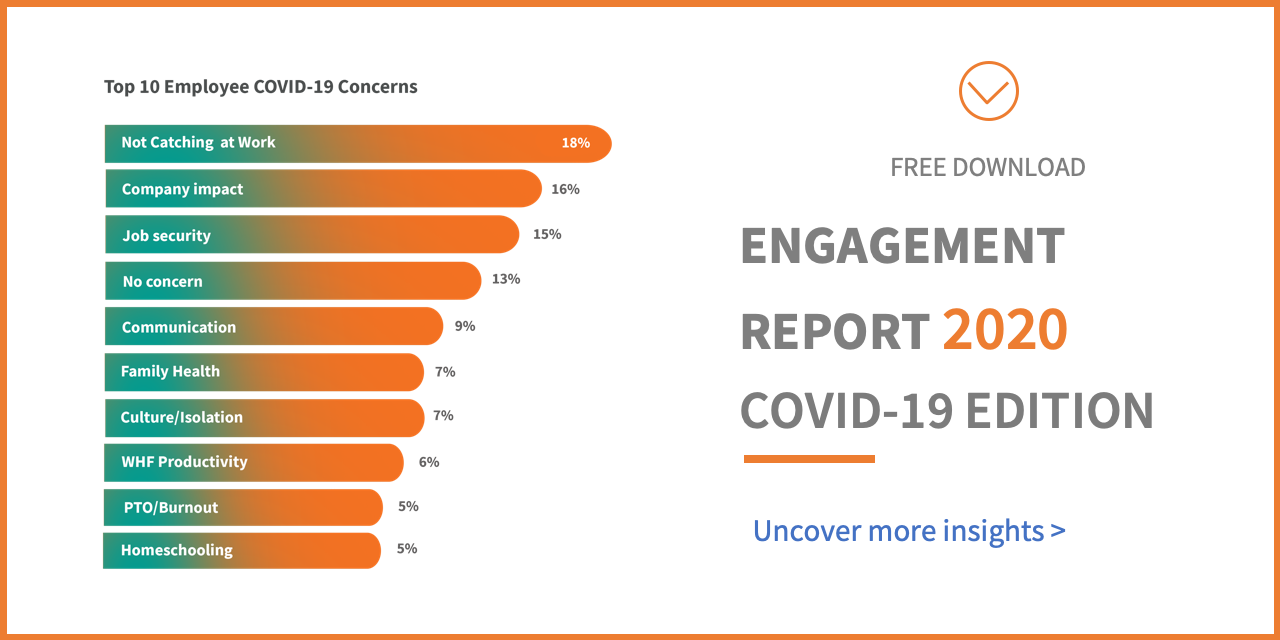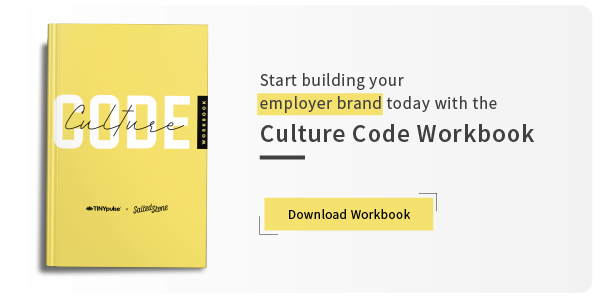25 Key Employee Survey Questions to Evaluate Internal Communications
Corporate communication.
What first came to mind when you read that? Was it marketing to customers? Communicating with investors?
There are many stakeholders that fall under the “corporate communication” banner. But one group in particular is sometimes left out: our employees.
While employee engagement and satisfaction is often top of mind for us as leaders, the internal communication behind it is easily overlooked.
Why is an internal communications strategy important?
Research by Gallup has shown 74% of employees feel they are missing out on company information and news.
A lack of transparency and dialogue not only blocks the flow of information, it can also erode employee trust and negatively impact your company culture.
We sometimes make the mistake of assuming it's in our employees’ best interest to keep certain information under wraps. But most of the time, it isn’t.
During these turbulent times, being forthright with our employees is more important than ever.
Open communication ensures your employees are on the same page and understand what’s happening in your company and why it’s happening.
What is an effective internal communications strategy?
From internal chat platforms to employee newsletter and emails, there are many internal communication channels we use on a daily basis. Your internal communication strategy is your plan for how you will use these channels to achieve specific results.
An effective internal communications plan doesn’t just consider downward messaging. It also provides employees an avenue to speak out, ask questions, and share their points of view.
With a strong internal communications strategy, your workers get the information they need and will be empowered to provide feedback and share knowledge. This transparency will, in turn, build trust with your employees.
When your workers trust your organization and leadership team, this benefits both your organization and individual employees.
READ MORE: HOW TO BUILD TRUST WITH YOUR DIRECT REPORTS THROUGH CONSISTENT 1-ON-1 MEETINGS
For example, one study found that employees at high-trust companies were 74% less stressed and 76% more engaged than employees at low-trust companies. They were also 50% more productive, leading to higher profitability for their organization.
How to measure internal communication effectiveness
To develop an effective internal communications strategy or improve an existing one, research is key. Start by assessing where your company’s currently at.
To conduct an internal communication assessment, there are four primary ways to get the data you need:
- Emails open rates
- Intranet page traffic
- Employee communications survey
- Employee focus groups or interviews
1. Analyze internal email rates
For every employee who opens an email you send out, there is likely one who doesn’t. Research shows that only 65% of internal emails are ever opened. Of those who do open emails, even less actually take action.
Measuring how well your employees engage with your internal emails requires analyzing a combination of metrics.
These metrics include:
- Open rates: How many of your employees actual open your email
- Click-through rates: How many of your employees click a link within the email
- Attention rate or average read time: How long your employees spend an email once they’ve opened it.
By monitoring these rates for your employee newsletters, event invitation, internal communications, and more, you can gain valuable insights.
You can then compare your own metrics with benchmarks for your industry to get a baseline of how well your email communications are performing.
2. How do you know if your intranet is effective?
Similar to your external website, internal website analytics can be eye-opening. Like many organizations, your intranet team probably puts a lot of work keeping your site up-to-date for employees. But are you tracking its effectiveness?
Simple data—such as unique page visits, pages visited, bounce rates, and time spent on web pages—can be very telling. You can get an even better understanding of how well your intranet is working by measuring how well your employees are engaging with content.
Are they liking, sharing, or commenting on internal posts? Are your workers actively sharing their own content?
READ MORE: HOW TO INCREASE EMPLOYEE SURVEY RESPONSE RATE IN ONE EMAIL
The more engaged your employees are with your internal content, the more connected they will be—which can positively impact your company’s culture.
3. Employee focus groups or interviews about internal communications
Interviews with individual employees or small focus groups can help you start a dialogue about the internal communications at your organization. With social distancing, this can pose a challenge. But virtual interviews can be just as effective.
To get the most out of your sessions, use your results from your internal communications survey to guide the conversation. Pick one to three specific areas, such as providing feedback, and develop questions for each ahead of time.
4. Conduct an employee survey to evaluate internal communication
An employee communications survey is a great way to get an in-depth look at how your organization is doing with internal communications. It also provides your employees a safe space to anonymously share their concerns.
Ideally, you’ll want to keep your employee survey under 30 questions. This will help you get enough data to form a frame of reference and identify which areas could use improvement.
Comparing this with other data, such as your intranet page traffic, can help you get a better understanding why your employees may have responded how they did.
Survey question template about internal communication
The results from your internal communications survey will help you identify problem areas and develop a strong internal communications strategy.
By asking your employees about key communication areas, you can get the data you need to make informed decisions.
Sample survey questions about employee recognition
Culture of Recognition
- How valued do you feel at work?
- How much does our organization's culture drive your active engagement at work?
- Do you think that our organization does a good job of promoting recognition in the workplace?
- Has a manager given you any recognition in the past two weeks?
- How much do you personally recognize others at our organization when they do good work?
- How well are you recognized when you do great work?
Despite the fact that US companies spend over $100 billion annually on non-cash employee rewards, TINYpulse research found that only one in three employees feel they are recognized when they do great work.
This is concerning because a lack of recognition is one of the top reasons why employees leave an organization. Companies with effective recognition programs, however, have a 31% lower voluntary turnover rate.
Having an effective recognition plan in place is about more than just tenured or performance based rewards. We also need to look at incentives like peer-to-peer recognition or even a simple public acknowledgement.
Your employees’ responses to these questions about recognition will help you understand how appreciate they feel and which areas could use some adjusting.
Employee survey questions about feedback collection
Employee Feedback
- How effectively does our organization take action on the feedback you provide?
- How seriously and effectively does our company take your feedback and suggestions?
- Have you seen any positive change since we started collecting employee feedback?
Only 25% of employees think their company takes effective action on their feedback, according to TINYpulse data. That means three out of four of your workers may feel like their opinion has little value in the workplace.
READ NOW: 14 EMPLOYEE SURVEY QUESTIONS ABOUT MANAGEMENT EFFECTIVENESS
In addition to empowering your employees, ensuring every employee's voice is heard can help you increase equality and inclusiveness in your workplace. Asking your workers about their experiences will help shed a light on how well your organization handles feedback.
Sample survey questions about internal information flow
Information Flow
- This organization provides adequate information about my progress in my job.
- This organization provides adequate information about policies and goals.
- This organization provides adequate information about important changes.
- How can we improve communication at our organization?
- What communication avenue do you utilize the least or find most ineffective at our company?
- Do you feel that you have a clear idea on how our company is performing?
How well you share information with employees impacts how well they can do their job and how they feel about your organization. With many of our team members still working remotely, providing clear guidance on policy and organizational changes is critical.
BOOK A DEMO AND SEE HOW YOU CAN SOLICIT 360 FEEDBACK FROM ANYONE AT ANY TIME.
The responses to these questions will help you better understand how well your company does with sharing information and whether or not the channel you are using is effective.
Sample survey questions about transparency
Organizational Transparency
- How transparent do you feel management is?
- People in the organization regularly share views on issues of importance.
- I understand the long-run competitive strategy of this organization.
- Departments in my organization communicate frequently with each other.
- This organization always tells the truth.
- The organization provides accurate information to people like me.
- How satisfied are you with the level of communication you are receiving from the company?
Organizational transparency is one of the top company values every organization should strive to live by. Open communication creates a high-trust company culture. This helps improve everything from employee happiness to profitability.
Asking your workers about transparency on your employee survey opens the door to honest feedback that can lead to engaging dialogue.
Sample survey questions about internal social media use
Social Media
- The organization's internal use of social media gives me a sense of belonging to the organization.
- The organization's internal use of social media improves communication and understanding between colleagues.
- The organization's internal use of social media gives me a way to influence others and the organization.
With over 3 billion social media users worldwide, it’s no surprise that social media is now commonplace in the workplace.
From Slack to Facebook’s Workplace, more and more organizations are using social media to keep employees connected and give them an avenue to share information.
While many organizations have a well-planned social media strategy, internal use can often be overlooked.
By asking your employees about your internal use of social media, you can see where improvements can be made. If you’re not currently using social media internally, this is a great opportunity to find out what your employees would like to see.
How effective is your internal communication strategy?
The foundation of any internal communication plan is employee feedback. By asking your employees about internal communications, you can get the insights you need to make your strategy more effective.
Start with an internal communication survey to give you a baseline understanding of well your current plan is working. Compare your results to your employee email rates and intranet traffic to begin to connect the pieces.
If there are any issues or results you’d like to clarify or dig deeper into, consider holding a virtual focus group or sending a short follow-up survey to your employees.
With better data, you can create a more informed strategy. And that’s the ticket to happier, more engaged employees and a healthier company.
Share this
You May Also Like
These Related Stories





.png?width=534&height=632&name=blog%20ad%20(1).png)
